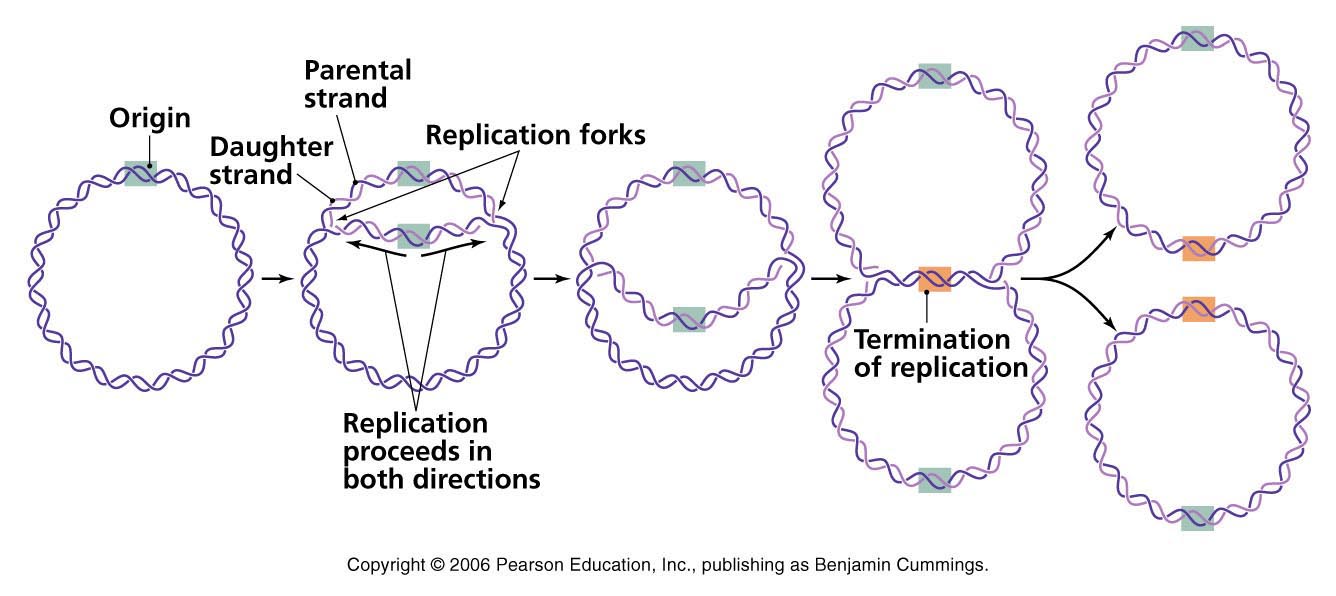See the answer see the answer see the answer done loading.
dna replication and cell division. dna replication is an important process which takes place in every organisms, be it prokaryotic or eukaryotic. ขั้นตอนการจำลองตัวเองของดีเอ็นเอ(dna replication) ของพวกโปรคาริโอต (step of dna replication of prokaryotes) During cell division in eukaryotic cells, the replicated dna is equally distributed between two daughter cells. On the leading strand, dna is synthesized continuously, whereas on the lagging strand, dna is synthesized in short stretches called okazaki fragments.

dna replication is an important process which takes place in every organisms, be it prokaryotic or eukaryotic.
Transcription factors in eukaryotic cells can A single origin of replication results in the formation of two replication forks. Eukaryotic dna replication of chromosomal dna is central for the duplication of a cell and is necessary for the maintenance of the eukaryotic genome. The enzyme that take part in transcription is rna polymerase.during cell division the whole genome of living organism is replicated a lot of time, but transcription take place only of short portion of genome. Various numbers of proteins and enzymes are involved during the replication process each having their own specific role. Since prokaryotic cells typically have only a single, circular chromosome, they can replicate faster than eukaryotic cells. dna is copied during dna replication starting at the origin of replication. The dna replication steps can be broken down as: The following points highlight the three main phases of dna replication in prokaryotes. Click again to see term 👆. The steps of prokaryotic dna replication are as follows: Tiation of dna replication from the bacteriophage h origin as well as the e. dna is the genetic material which has to be distributed to the daughter cells.
The enzyme that take part in transcription is rna polymerase.during cell division the whole genome of living organism is replicated a lot of time, but transcription take place only of short portion of genome. During replication process the hydrogen bonds between complimentary strands break and allow the dna helix to unzip. Learn vocabulary, terms, and more with flashcards, games, and other study tools. In fact, a prokaryotic cell can undergo two rounds of dna replication before the cell, itself, has divided. Eukaryotic cells on the other hand, have multiple points of origin, and use unidirectional replication within the nucleus of the cell.

The origin sites are targeted by the initiator proteins, which recruit additional proteins that help in the replication process to form a replication complex around the dna origin.
Cracking up the hydrogen bonds in the double helix is the vital. The steps in binary fission include: The synthesis of a dna molecule (or) dna replication process can be divided into three stages: What are the steps of dna replication quizlet? dna replication and cell division. dna replication of prokaryotes dna replication is the most crucial step in cellular division, a process necessary for life, and errors can cause cancer and many other diseases. replication in prokaryotes starts from a sequence found on the chromosome called the origin of replication—the point at which the dna opens up. dna is copied during dna replication starting at the origin of replication. This is a nucleotide sequence of 100 to 200 pairs of bases. The origin sites are targeted by the initiator proteins, which recruit additional proteins that help in the replication process to form a replication complex around the dna origin. The following points highlight the three main phases of dna replication in prokaryotes. Learn vocabulary, terms, and more with flashcards, games, and other study tools. Helicase opens up the dna double helix, resulting in the formation of the replication fork.
dna replication of eukaryotes (cells with a nucleus) occurs stepwise. Enzymes that take part in the eukaryotic dna replication process include: Before replication can start, the dna has to be made available as template. This means that dna replication can occur during cell division in prokaryotes. Transcription factors in eukaryotic cells can

Is also carried out by dna polymerases and other proteins within the nucleus.
Notes # origin of replication: Use the ten steps summarizing the process of dna replication listed just prior to table 14.1 in the text as an outline for discussing dna replication in prokaryotes. Now what happens, without digging. The number of dna polymerases in eukaryotes is much more than prokaryotes: This is a nucleotide sequence of 100 to 200 pairs of bases. replication in prokaryotes starts from a sequence found on the chromosome called the origin of replication—the point at which the dna opens up. Basic steps of dna replication. More complex then bacterial replication, large linear chromosomes, chromatin is tightly packed within nucleosomes, more complicated cell cycle regulation. The dna tends to become more highly coiled ahead of the replication fork. replication in prokaryote occurs in the cell cytoplasm. Eukaryotic cells on the other hand, have multiple points of origin, and use unidirectional replication within the nucleus of the cell. The main steps in dna replication is the same between eukaryotes and prokaryotes with a few differences in the enzymes used and the rate of replication. The cell forms a new septum and undergoes cytokinesis.
21+ Steps Of Dna Replication In Prokaryotes Gif. The table below highlights the major differences between eukaryotic and prokaryotic dna replication. This is the process by which the genome of prokaryotic cells duplicates so that it can be transformed into a daughter cell. It consists of three steps: Notes # origin of replication: ขั้นตอนการจำลองตัวเองของดีเอ็นเอ(dna replication) ของพวกโปรคาริโอต (step of dna replication of prokaryotes)






